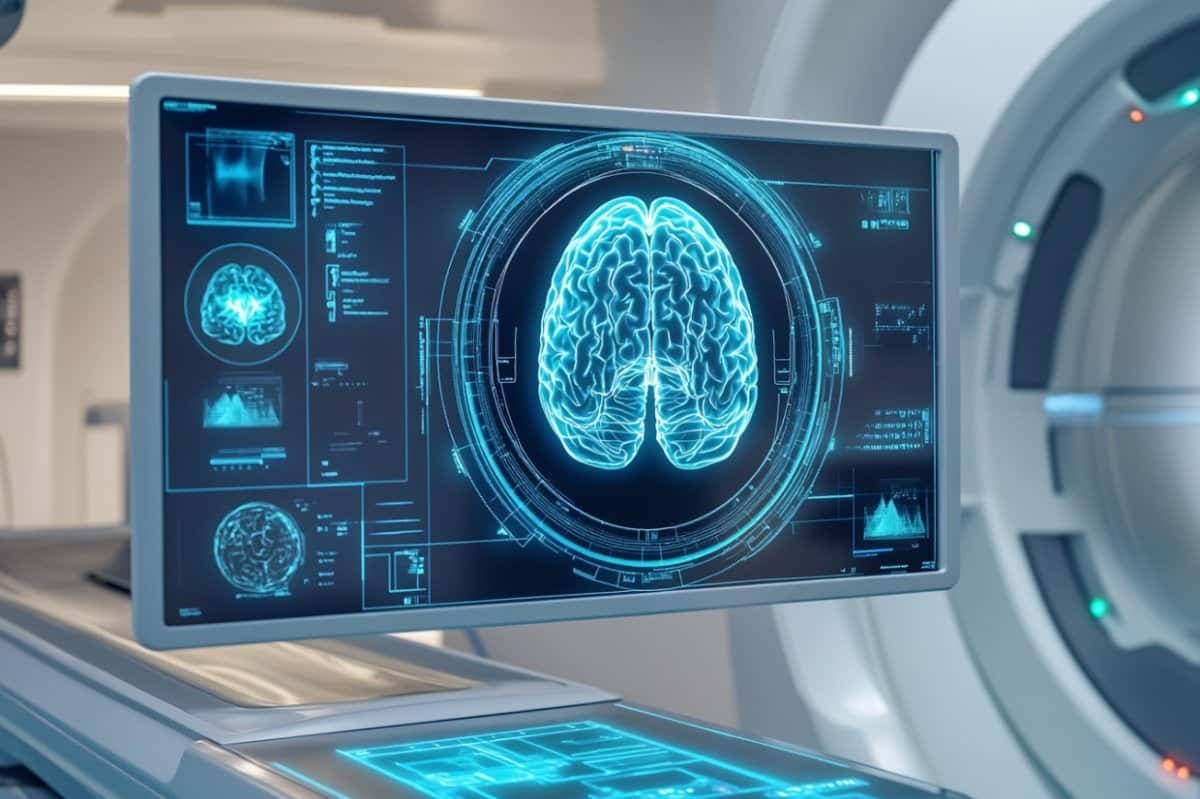Summary: A new AI model can detect the transition from relapsing-remitting MS to secondary progressive MS much earlier than traditional clinical diagnosis. Using data from over 22,000 patients, the model analyzes routine healthcare information and even indicates its confidence level for each assessment.
In validation tests, it correctly identified disease progression with about 90% accuracy, often earlier than noted in medical records. Early detection could help patients receive more effective treatments sooner and slow disease progression.
Key Facts:
- High Accuracy: The AI model correctly identified MS progression in about 90% of cases.
- Early Intervention: Earlier diagnosis allows timely treatment adjustments, reducing disease worsening.
- Confidence Scoring: The AI also reports how confident it is in each individual assessment.
Source: Uppsala University
Multiple sclerosis (MS) is a chronic, inflammatory disease of the central nervous system. In Sweden, there are approximately 22,000 people living with MS.
Most patients start with the relapsing-remitting form (RRMS), which is characterised by episodes of deterioration with intervening periods of stability.

Over time, many people transition to secondary progressive MS (SPMS), where their symptoms instead get steadily worse, without obvious breaks. Identifying this transition is important because the two different forms of MS require different treatments.
Currently, the diagnosis is made on average three years after the transition begins, which can lead to patients receiving medicines that are no longer effective.
Based on Swedish MS data
The new AI model summarises clinical data from over 22,000 patients in the Swedish MS Registry. The model is based on data already collected during regular healthcare visits, such as neurological tests, magnetic resonance imaging (MRI) scans and ongoing treatments.
“By recognising patterns from previous patients, the model can determine whether a patient has the relapsing-remitting form or whether the disease has transitioned to secondary progressive MS. What is unique about the model is that it also indicates how confident it is in each individual assessment.
“This means that the doctor will know how reliable the conclusion is and how confident the AI is in its assessment,” says Kim Kultima, who led the study.
Ninety per cent accuracy
In the study, now published in the journal Digital Medicine, the model correctly identified the transition to secondary progressive MS in almost 87 percent of cases, or earlier than documented in the patient’s medical records, with an overall accuracy of around 90 percent.
“For patients, this means that the diagnosis can be made earlier, which makes it possible to adjust the patient’s treatment in time and slow down the progression of the disease.
“This also reduces the risk of patients receiving medicines that are no longer effective. In the long term, the model could also be used to identify suitable participants for clinical trials – which could contribute to more effective and individualised treatment strategies,” Kultima concludes.
An open, anonymised version of the model is now available to researchers via the web service: https://msp-tracker.serve.scilifelab.se.
About this AI and multiple sclerosis research news
Author: Sandra Gunnarsson
Source: Uppsala University
Contact: Sandra Gunnarsson – Uppsala University
Image: The image is credited to Neuroscience News
Original Research: Open access.
“Conformal prediction enables disease course prediction and allows individualized diagnostic uncertainty in multiple sclerosis” by Kim Kultima et al. npj Digital Medicine
Abstract
Conformal prediction enables disease course prediction and allows individualized diagnostic uncertainty in multiple sclerosis
Accurate assessment of progression and disease course in multiple sclerosis (MS) is vital for timely and appropriate clinical intervention.
The gradual transition from relapsing-remitting MS (RRMS) to secondary progressive MS (SPMS) is often diagnosed retrospectively with a typical delay of three years.
To address this diagnostic delay, we developed a predictive model that uses electronic health records to distinguish between RRMS and SPMS at each individual visit.
To enable reliable predictions, conformal prediction was implemented at the individual patient level with a confidence of 93%.
Our model accurately predicted the change in diagnosis from RRMS to SPMS for patients who transitioned during the study period.
Additionally, we identified new patients who, with high probability, are in the transition phase but have not yet received a clinical diagnosis.
Our methodology aids in monitoring MS progression and proactively identifying transitioning patients.
An anonymized model is available at https://msp-tracker.serve.scilifelab.se/.






